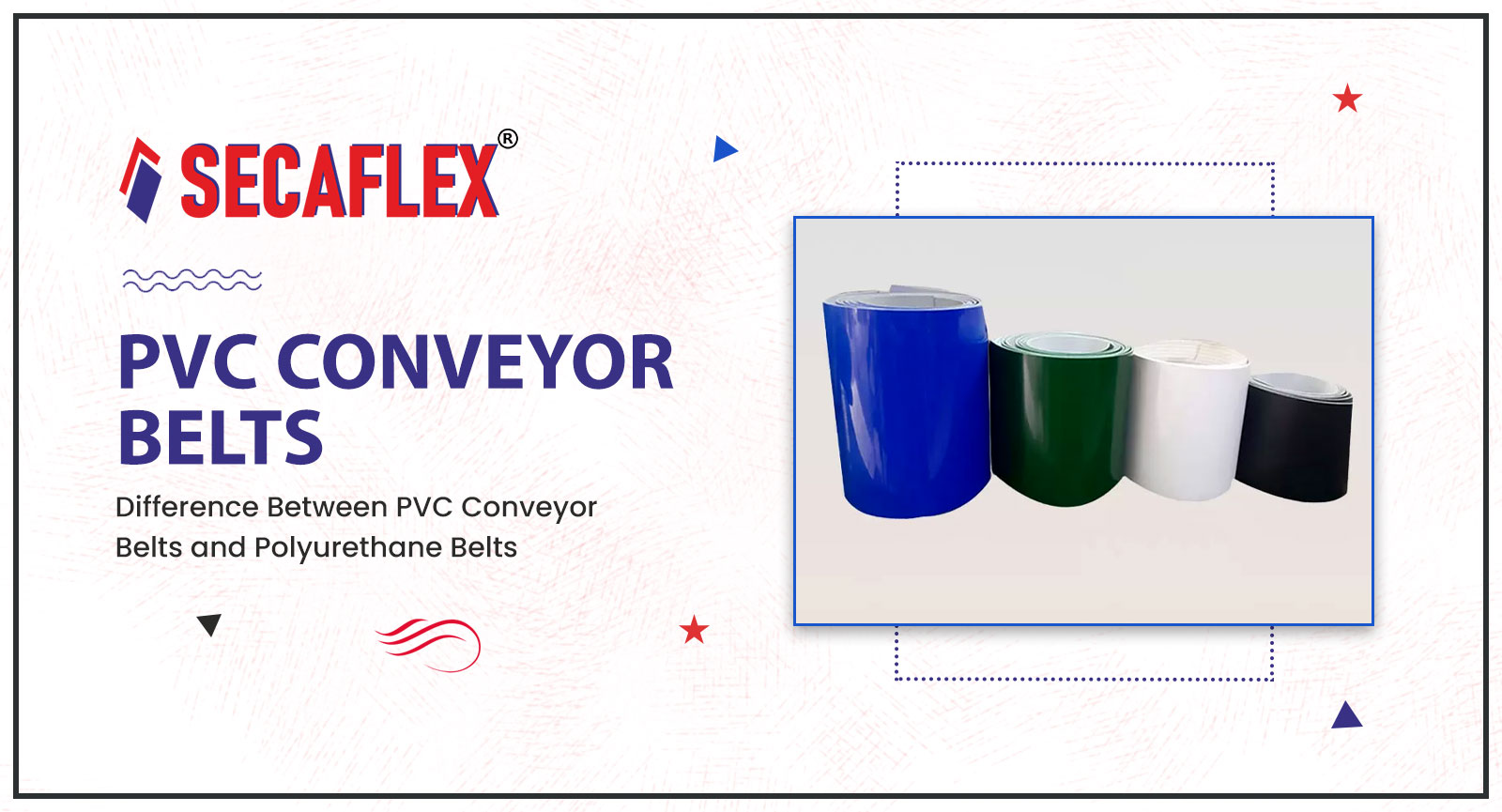- + 91-9167662789
- care@dktee.com

February 21, 2024

Conveyor belts play a crucial role in many industries, efficiently transporting materials from point A to point B. But with a variety of materials and options available, choosing the right belt can be a head-scratcher. Two popular choices are PVC Conveyor Belts and polyurethane (PU) belts, each with unique strengths and weaknesses.
So, before you get caught in a belt-buying dilemma, let’s look at their key differences to help you make your selection.
Material Used in PVC Conveyor Belts and PU Belts
PVC (Polyvinyl Chloride): A widely used plastic known for its affordability and durability. PVC belts typically have a plastic top layer bonded to a synthetic fabric core, often polyester or nylon. They often have textured surfaces for enhanced grip and come in various thicknesses and colors.
PU (Polyurethane): A versatile engineering plastic offering superior flexibility and abrasion resistance compared to PVC. PU belts boast a smooth surface with internal tension members for added strength and a fabric tooth facing on the back for drive engagement. The variety extends to food-grade, oil-resistant, and static-dissipative options.
PVC Conveyor Belt Vs. Polyurethane Belt
Flexibility: PU wins the bend test! Its high elasticity makes it ideal for tight turns and complex conveyor systems. PVC, while somewhat flexible, is better suited for straight runs.
Abrasion Resistance: PU takes another point! Its robust construction withstands wear and tear better than PVC, making it perfect for heavy-duty applications. PVC offers decent resistance but wears down faster under harsh conditions.
Oil & Chemical Resistance: PU shines again! It excels in environments with oils, greases, and mild chemicals, unlike PVC, which can degrade under such conditions.
Temperature Range: Both materials have limitations. A PVC conveyor belt performs well in moderate temperatures between -10°C and 70°C, while PU offers a wider range from -40°C to 100°C, handling hot and cold environments better.
Strength and Load Capacity: PU boasts higher tensile strength and load capacity, ideal for heavy-duty conveying. PVC is sufficient for lighter loads.
Cost: PVC is budget-friendly and its affordability makes it ideal for basic applications where cost is a major concern. PU, with its premium properties, comes at a higher price tag.
Maintenance: Both require regular cleaning and inspection, but PU’s seamless construction minimizes potential snag points. PVC’s textured surface might trap debris.
Pros and Cons of Both Belts
PVC Conveyor Belt:
Pros: Affordable, readily available, good chemical resistance (except acids and alkalis), flame-retardant options.
Cons: Not as flexible as PU, limited temperature range, can become brittle over time, not ideal for oily environments.
Polyurethane (PU) Belt:
Pros: Highly flexible, excellent abrasion resistance, wide temperature range, oil and grease resistant, food-grade options available.
Cons: More expensive than PVC, can degrade under UV exposure, requires specific cleaning methods.
Applications of PVC and PU Belts
PVC Conveyor Belt: Ideal for light to medium-duty applications in dry environments, like conveying boxes, textiles, or non-abrasive materials. Popular in packaging, warehousing, and recycling industries.
PU Belt: The go-to choice for demanding applications, including heavy loads, abrasive materials, extreme temperatures, oily environments, and hygiene-critical settings. Widely used in food processing, mining, automotive, and chemical industries.
The Final Verdict: It’s All About Your Needs
Ultimately, the ideal belt hinges on your specific application. Consider factors like material handling, environmental conditions, budget, and required performance.
Choose a PVC conveyor belt for Light-duty applications, moderate temperatures, and cost-effectiveness. Select a PU belt for Heavy-duty tasks, harsh environments, food handling, and demanding performance needs.
Remember, consulting with a conveyor belt expert can provide invaluable guidance in navigating this crucial decision.

DKT Engineering Enterprises
DKT Engineering Enterprises has vast experience in manufacturing conveyor belts in India. We are providing high quality products to our clients Since 2010.
